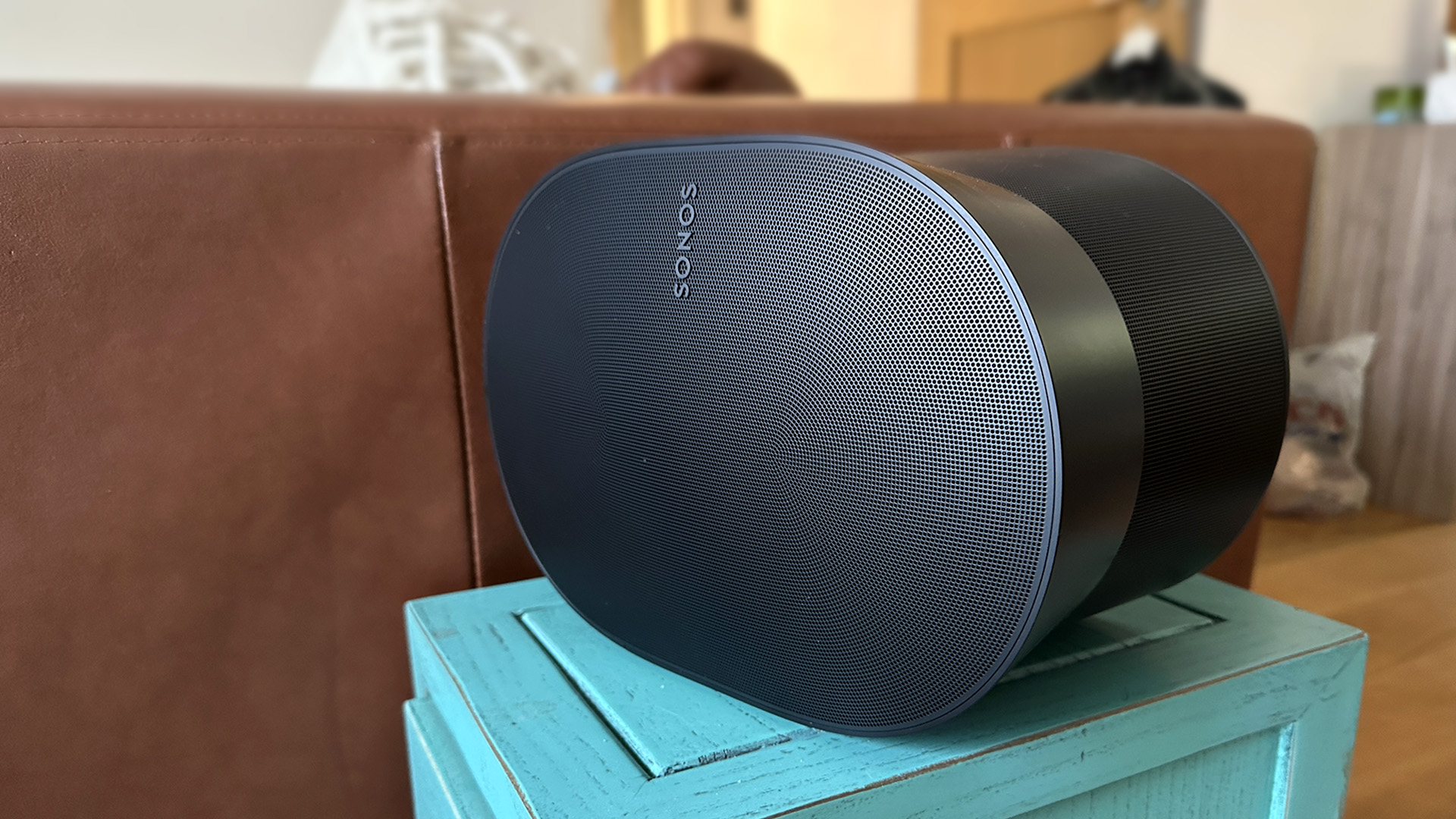Best wireless speakers 2026: top Wi-Fi multi-room speakers for the home
The best wireless speakers deliver top sound quality and maximum multi-room greatness


The best wireless speakers make it easy to stream sound from your phone across the house to big, powerful speakers with hi-fi levels of sound quality. The best Wi-Fi speakers also act as multi-room speakers, using technology such as AirPlay 2, Google Cast and Spotify Connect to make it easy to play music in just one room, or to entertain/annoy everyone in your house, wherever they are.
The best Wi-Fi speakers generally sound better than the best Bluetooth speakers, thanks to being both bigger (which is always useful for speakers) and smarter, often with better sound-handling electronics. Few are portable, of course, but if you're looking for a fixed setup, then go all out for the best sound quality you can find. For this guide, we're also not including the best soundbars on the market, since they're a separate category for most people.
Some of these speakers support Bluetooth streaming as well as Wi-Fi, of course. Many also have support for Alexa or Google Assistant, though we're not making those a priority for this guide – we have a separate guide to the best smart speakers if talking to your speakers is really important to you. We're more focused on audio quality, style and great support for different streaming options.
The two most important multi-room systems are Apple AirPlay 2 and Google Cast, because if something supports both of them, it enables you to play just about anything from either iPhone or Android to those speakers. Spotify users will really love Spotify Connect, though it does mean you're committed to one streaming service (and swallowing all of the price hikes).
T3's Top Picks

Best for most people
Sonos has long been one of the biggest names in multi-room audio, and while it's diversified out from just that niche, it still makes staggeringly good speakers that integrate nicely in multi-room setups. The Era 300 is its current best, a beefy but precise speaker that can fill a room without any fuss.

Best for Apple users
There's nothing wrong with leaning into an ecosystem, and if you're a big fan of Apple's devices and services then the HomePod's 2023 refresh will likely be ideal for you. It sounds astonishingly good, is actually quite reasonably priced, and will work a treat with the likes of Apple TV, your iPhone or iPad, or whatever else you fancy.

Best premium
You'll either love or hate what Bowers & Wilkins cooked up for its iconic Zeppelin speaker, but we're huge fans. The Pro model is an easy sell once you listen to it – it sounds simply amazing, with hugely expansive sound that can fill large spaces. It's easy to use, with a great app, and Award-winning, too.
The best wireless speakers in 2026
The best wireless speaker for most people


Specifications
Reasons to buy
Reasons to avoid
Described as "a premium smart speaker you have to hear to believe" in our Sonos Era 300 review, the latest Sonos Era range is hugely impressive, delivering bigger sound than you'd expect from its diminutive size.
"The Sonos Era 300 delivers where it counts, offering seriously impressive immersive sound that’s way beyond even the earlier Sonos Five. The addition of the voice assistant – and the ability to turn it off – is a plus, as is the Bluetooth connection."
"However, those looking to hardwire it may find the USB-C port a little annoying," was about the only bad point we could lay at this speaker. There is a 3.5mm jack, though, and you can buy an Ethernet adapter if you want to hard-wire.
For those of us looking for lush sounds with wireless connectivity boxes ticked, however, without doubt though the Sonos Era 300 is the best wireless speaker money can buy right now.
The best wireless speaker for Apple users

Specifications
Reasons to buy
Reasons to avoid
A speaker that will divide people depending on whether they're all in on Apple services or not, there's no doubting at all that the second-generation HomePod sounds simply superb. Apple has engineered a real marvel in this impressively compact wireless speaker.
The big asterisk here is that since it only really works via AirPlay, you need to be a full Apple convert to really consider it. If you're an iPhone and Mac user, have an Apple Music subscription and watch Apple TV, then you'll find it a natural and impressive extension of those services that integrates completely effortlessly. For those who use Siri and have an Apple Home setup, it's also a great hub for all of those smart activities.
However, with no Bluetooth and limited to no connectivity with non-Apple devices, it's an undeniably niche option. Still, we've got to come back to that sound, which is full and rich, detailed but not too sharp.
The best large-scale wireless speaker


Specifications
Reasons to buy
Reasons to avoid
The first Zeppelin speaker was a 2007 iPod dock, and it's safe to say that the current model is quite a bit more advanced. That's why it won the T3 Awards 2022 trophy for Best Wireless Speaker. But this Pro model is a step up once again, a more grown up and refined version – and another T3 Awards winner for 2025.
It streams pretty much everything via aptX Adaptive, AirPlay 2, Spotify Connect and B&W's own Music app, which supports all the key streaming services, and it borrows some of its technology from the kind of hi-fi equipment where if you have to ask the price, you can't afford it. By audiophile standards this is cheap.
The Zeppelin has a hi-res DAC (24-bit/192kHz, initially restricted to 24-bit/96KHz) feeding 240W of class D amplification into twin double-dome tweeters, a 150mm subwoofer and twin 90mm mid-range drivers, which use the same tech as B&W's range-topping 800 Series speakers. In our Bowers & Wilkins Zeppelin review, we concluded that given a good quality audio source, the Zeppelin sounds fantastic – incredibly detailed and involving.
The best small high-end wireless speaker


Specifications
Reasons to buy
Reasons to avoid
It might look like a smart speaker, but despite appearances the Bluesound is all about sound quality – and it's "a wireless speaker to be reckoned with" as stated in our Bluesound Pulse M review.
Treat it to the quality of content it demands and it’s a very rewarding listen. Sure, you can buy smarter speakers than this for less money - but it’s safe to say they won’t sound as big or as accomplished.
If you’re after a smallish speaker with the smarts to create a big sound - and a big high-resolution sound at that - you absolutely, positively need to hear this one. It's a great choice, even if there are better-looking speakers out there.
Best multi-room speaker for a modern living space


Specifications
Reasons to buy
Reasons to avoid
A more affordable multiroom speaker that oozes style and minimalism, the Audio Pro Addon C10 MKII won't be an eye-sore in any modern living space. You get the choice of three sleek colours, white, black, and grey - so design-wise it's sure to be a hit.
It works with plenty of multiroom setups - including Google Cast, AirPlay 2 and Audio Pro's own system. You'll also be able to play music through Bluetooth and the RCA inputs on the back, as well as using Spotify Connect or Tidal through the WiFi connectivity. Six preset buttons give you a shortcut to some of your favourite internet radio stations and playlists as well. It doesn't have its own battery so you will have to keep it plugged in, but this speaker is incredibly easy to set up and use. What Audio Pro does really well is building speakers that cater to every type of music and the Audio Pro Addon C10 MKII is no different, as our full Audio Pro C5 Mk II review explains.
Best compact wireless speaker for audiophiles


Specifications
Reasons to buy
Reasons to avoid
In our Naim Mu-so Qb (2nd Gen) review we were unequivocal: "we're looking at a speaker that is, simply, the best speaker for those who want uncompromising audio quality, but don't have space for big stereo systems or wireless units that take over a whole sideboard on their own."
The Qb is the smaller sibling of the Naim Mu-so (2nd Gen), but it's much smaller at 210 x 218 x 212mm. That's bigger than, say, an Amazon Echo, but it's much smaller than most high-end wireless speakers and its diminutive dimensions belie its power: there's 300W of audio power here, with the sound quality we've come to love from Naim. We've tried every conceivable genre of music on the Mu-so Qb (2nd Gen) and it's all sounded spectacular. If you live in a flat/apartment, this might be the best option available.
In our review, we said that it is "a high-end hi-fi system squeezed by mad scientists into a cube that could fit into the living room of a pokey flat… but that has the sound quality to fill a ballroom if needed." And while that's a funny mental image it's absolutely true: this is a superb high-end speaker that sounds fantastic in any environment. The only thing it doesn't deliver is true stereo – it's a one-box system – but that's common to all single-unit systems. There's simply nothing at this size that sounds better.
How to choose the best wireless speaker for you
Decide what type of streaming you want to employ. Apple fans may favour AirPlay 2. Google lovers may want Chromecast compatibility.
Obviously if you're a subscriber to Spotify, Tidal, Amazon Music Unlimited, Qobuz or one of the myriad other subscription-based streaming services, you'll need compatibility with that, but note that these can also be piggy-backed over Chromecast or AirPlay. Apple fans: while AirPlay 2 supports multiple speakers from your mobile, original AirPlay speakers only allow this via your PC or Mac.
I've helpfully indicated what each speaker is compatible with, to help you out, there. Some of them also support Bluetooth, either because there is consumer demand for big, expensive speakers that support the format or because brands just feel obliged to chuck it in as a backup.
You'll also want to consider what size of room you want to use it in. Again, I've noted what size of space I think each speaker is able to fill – small (offices, kitchens, bedrooms); medium (larger bedrooms, most front rooms) and large (more palatial or open-plan spaces, combined kitchen/lounge type spaces, Donald Trump's toilet and so forth).
Finally, although these are meant to be wireless, in some houses that's just not going to work, and you may have to revert to powerline AV – T3 uses and endorses Devolo powerline AV. A lot of these speakers have ethernet connections to accommodate this. Although with the best mesh networks, high-speed wirelessness for all is no longer a pipe dream.
Reviewer panel

Mat is T3.com's Editor-in-Chief, and that means he has years of experience reviewing and evaluating high-end tech. That's included a lot of hands-on time with the best wireless speakers on the market.

Simon has been reviewing tech for years now, with particular expertise where A/V is concerned. This saw him head up What Hi-Fi? as its editor, overseeing countless reviews of high-end audio products, before returning to his current freelance role.

Yasmine was a hugely successful reviewer at T3 for a number of years, and is now a freelance writer. She's tested a wide range of speakers in her time, including many of the most popular devices on the market.

Matthew served as T3's AV and Smart Home Editor (UK), which gave him a huge amount of insight into what makes a great wireless speaker, among other things. He's now Senior Editor for TV and Audio at TechRadar.
Get all the latest news, reviews, deals and buying guides on gorgeous tech, home and active products from the T3 experts

Max is T3's Staff Writer for the Tech section – with years of experience reporting on tech and entertainment. He's also a gaming expert, both with the games themselves and in testing accessories and consoles, having previously flexed that expertise at Pocket-lint as a features editor.
- Mike LoweTech Editor
- Duncan Bell